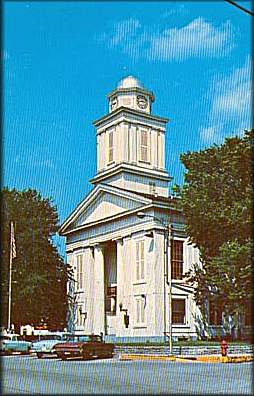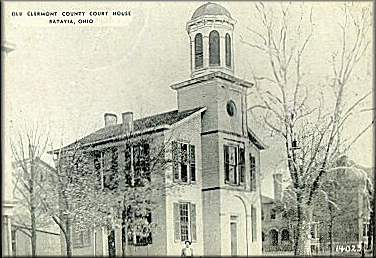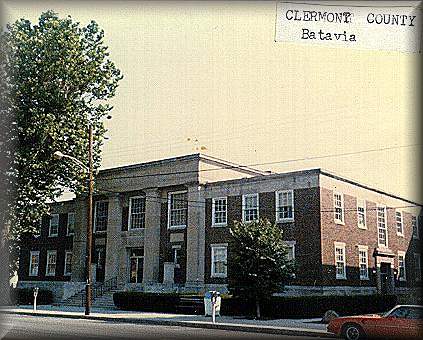PREFACE VOLUME TWO.
THE present age is happily awake to the duty of writing its own records, setting down what is
best worth remembering in the lives of the busy toilers of today, noting, not in vainglory, but
with an honest pride and sense of fitness, things worthy of emulation, that thus the good men do
may live after them. The accounts here rendered are not of buried talents, but of used ability and
opportunity. The conquests recited are of mind over matter, of cheerful labor directed by thought,
of honest, earnest endeavor which subdues the earth in the divinely appointed way. "The great
lesson of biography," it is said, "is to show what man can be and do at his best." A noble life put
fairly on record acts like an inspiration, and no more interesting or instructive matter could be
presented to an intelligent public.
In this volume will be found a record of many whose lives are worthy the imitation of coming
generations. It tells how some, commencing life in poverty, by industry and economy have
accumulated wealth. It tells how others, with limited advantages for securing an education, have
become learned men and women, with an influence extending throughout the length and breadth
of the land. It tells of men who have risen from the lower walks of life to eminence as statesmen,
and whose names have become famous. It tells of those in every walk of life who have striven to
succeed, and records how that success has usually crowned their efforts. It tells also of those
who, not seeking the applause of the world, have pursued the "even tenor of their way," content
to have it said of them, as Christ said of a woman performing a deed of mercy, 'They have done
what they could.' It tells how many, in the pride and strength of young manhood, left all, and at
their country's call went forth valiantly "to do or die," and how through their efforts the Union
was restored and peace once more reigned in the land.
Coming generations will appreciate this volume, and preserve
PREFACE
it as a sacred treasure, from the fact that it contains so much that would never find its way into
public record, and which would otherwise be inaccessible. Great care has been taken in the
compilation of the work, and every opportunity possible given to those represented to insure
correctness in what has been written ; and the publishers flatter themselves that they give to their
readers a work with few errors of consequence.
Yours respectfully,
HOBART PUBLISHING COMPANY.
July, 1913.
INDEX
|
A
Abbott, E. C.
Abbott, J. D. (M. D.)
Adams. Mrs. Beulah. V.
Adams, Chas.
Adams, Wm. B.
Aiken, W. H. (M. D.)
Anderson, G. C.
Anshutz. H. F. (M. D.)
Applegate, A. B.
Applegate, .Joseph M.
Applegate, Wm. B.
Armacost, G. F.
Armstrong, P. G.
Aultman, Wm. A.
B
Bagby, Rev. W. W.
Baird, Chambers
Baird, Major Chambers
Balzhiser, Andrew
Balzhiser, Jacob
Bambach, G. G.
Bambach. Judge G.
Banister, W. H.
Barrow, A. D.
Barrow. H. C.
Bass, J. Q.
Baum, W. H.
Beasley, S. C.
Beasley, Mrs. Helen
Bechtold, John G.
Beck, Horace J.
Beck, John H.
Bee, E. C.
Belt, Richard C. (M. D.)
Bennett, C. A. (M. D.)
Bettie, F. E.
Bice, Georgia Park
Bolender, Daniel
Bolender, John J.
Boyce, .John A.
Boyd, Frank E.
Bradley, N. E. (M. D.).
Broadwell, L. M.
|
573
64
285
200
699
691
628
446
639
300
304
238
542
568
82
157
333
338
52
171
655
315
325
302
437
501
494
251
477
479
836
638
453
34
359
742
737
340
487
640
102
|
Brock, W. W., Sr.
Brower, Abram
Brown, W. A.
Brown, Geo. T.
Buchanan, John
Buchanan, Thos.
Bushelman, W R.
Bushman, Fletcher
Burbage, John
Burger, John
Butler. Marion
C
Cahall, A. P
Campbell, Hon. Robt. E.
Canter, S. A. (M. D.)
Carnes, Arthur L.
Chatterton, C. P.
Chatterton, Ezra
Chatterton. Philip
Christie, W. B.
Clark, L. M.
Cleveland. Aaron B.
Collins, C. O.
Cook, F. L.
Corbin, C. H.
Coslett, John
Cox, Greenlief Norton
Crain. I. N.
Crane, Alber
Crane, Cyrus L.
Craver, Wm.
Criswell, B. R.
Cross, O. P.
Crowell, W. C. (M. D.)
Cumberland, Jas. A.
Curlis, B. E.
Curry, F. C. (M. D.)
Cushing, John J., Sr
D
Dailey, N. T.
Dale, F. J.
Davidson, James
Davidson, John S.
|
288
468
771
656
508
844
788
378
512
295
759
558
178
736
279
394
395
392
778
642
57
544
455
37
3S2
500
751
664
673
805
488
697
817
517
807
623
533
389
837
659
372
|
INDEX
|
Davis, Benj. F.
Davis, B. T.
Daugherty, Thos.
Daughters American
Revolution, Ripley Chapter
Day, J. H.
Deeny, J. C.
Denniston, H. W.
De Vore Family
De Vore, J. W.
Donham, Col. J. S.
Donaldson, Christian
Dragoo, Samuel
Duchemin, Wm. E.
Dudley, Frank M.
Dudley, Otis
Dunn, O. F.
Dyer, Joseph A.
E
Edgington, Capt. John Emery
Edgington, Ira L.
Edgington, J. S.
Edwards, F. M.
Ellis, Amos F.
Ellis, P. N.
Ellis, T. K.
Ellsberry, B. F.
Ellsberry, W. S. (M. D.)
Ely, A. F.
Ely, Edwin C.
Emery, J. W.
Erion, John G.
Ertel, Hon. Earl E.
Evans, Chas. P.
Evans, Joseph H.
Evans, Leroy J.
Evans, W. H. (M. D.)
Eveland Family
Eveland, Wm. B.
Ewan, Jas. H.
Eylar, Wm. A.
F
Fagaly, M. W.
Fagley, Chas. A.
Faul, Wm. L. (M. D.)
Fee, Chas. B.
Fee, Wm. M.
Fetzer, F. C.
Fite, Rufus L
|
283
650
768
95
721
530
831
169
189
335
266
507
781
191
275
605
515
197
539
827
419
490
402
749
653
677
21
336
462
19
485
549
211
255
271
286
608
660
203
564
604
792
423
610
|
Fitzpatrick, T. V. (M. D.)
Flanegan, W. P.
Flinn, Thos. H.
Flowers, John C.
Fomorin, J. L. (M. D.)
Fossyl, Frank
Francis, Dr. A. W.
Frazier, Gustavus A.
Frebis, Frank X.
Freschard, A.
Frey, Ludwig H.
Fridman, C. D.
Fridman, F.
Fridman, F. M.
Fridman, F. W.
Fridman, L. L.
Fridman, L. S.
Fridman, Wm. M.
Fry, L. H.
Fuhr, John C.
G
Games, David W.
Games, Hon. John F.
Gardner, Hon. B. E.
Gardner, John W.
Gardner, Louis O.
Gardner, Rev. Matthew
Gardner, Wm. M.
Garoutte, Elizabeth Park
Gatch, Emley Barber
Catch,. Geo. W.
Catch, Rev. Philip
Gates, Jas. H.
Gayley, Joseph
Germann, Michael
Gilliland, Wrn. A.
Ginnings, J. C.
Glancy, Allen
Gordon, B. W.
Gordon, S. C., M. D.
Groppenbacher, M. J.
Grimes, W. W.
Guynn, Wm. H.
H
Hahn, H. D.
Halse, Geo. W.
Harber, P. C.
Harlow, Chas.
|
835
343
472
821
625
662
480
621
578
791
341
689
802
794
345
346
223
36
341
431
830
141
160
136
843
130
514
357
644
466
119
733
438
483
841
741
428
584
581
755
579
70
711
744
154
823
|
Hawkins, Elisha
Hawkins, Rezin
Hawkins, Richard
Hawley, Harvey
Hays, Chas. O.
Heiny, Wm.
Heizer, Joseph G.
Henning, W. H.
Hickey, Geo.
Hight, Wm.
Hill, Amos S.
Hill, Geo. Hand
Hill, H. H.
Hill, Thos. W.
Hite, Frank P.
Hobson, W. H.
Holman, Ernest L.
Holman, H. W.
Holman, J. B.
Holmes, E. B.
Holmes, John G.
Hopping, Stewart
Houser, T. J.
Howe, E. W.
Hughes, Wm. J. (M. D.)
Hutchinson, Allen
Hutchinson, E. J.
Ireton, Geo. W.
I
Iuen, A. C.
J
Jacobs, W. J.
Jamieson, Milton
Jamieson, P. F.
Jarman, George
.Jarman, John
Jarman, Levi
Jenkins Family
Johnson, J. R.
Johnson, Wm. L.
Johnston, Robt. L.
Johnston, Wm.
Jones, Geo. G.
Jones, W. H.
Judd, Alonzo
K
Kain Family
Kautz, Gustavus
Kautz, Samuel
|
272
846
176
229
765
756
187
444
332
528
306
40
456
96
840
813
525
524
48
277
296
473
719
715
103
522
80
616
766
591
368
47
828
110
709
216
818
561
799
654
454
815
106
84
560
588
|
Kayser, A. F.
Kayser, Chas.
Kearns, M. A.
Keen, Geo.. A. & Bro.
Kelsey, Wm. S.
Kennedy, E. H.
Kennedy, L. D.
King, Ira
Knight, J. F.
L
Lady, D. F.
Lanham. C. A.
Lanham, G. W.
Larkin, Joseph L.
Leeds, W. H.
Leonard, John A.
Leever, W. E. (M. D.)
Liming, W. S.
Little, J. C.
Lockwood, E. A.
Lockwood, Elder James Henry
Lockwood, Wm. J.
Long, Clarence G.
Long, J. R.
Longworth, Geo. C.
Lush, John
Lyon, Louis
Lyon, Manville
Lytle, J. E.
Lytle, John W.
M
Manning, E. C.
Martin, Edmund
Martin, Samuel H.
Meek, John
Mefford Brothers
Mefford & Grim Co.
Mefford, S. B.
Meldahl, Anthony
Miller, Robt. W.
Miller, Wm. H.
Mischler, Louis
Mitchell, Chas.
Moore, H. U.
Moorhead, E. S.
Morse, I. S.
Motsinger, W. E.
Mott, J. V. (M. D.)
Moyer, Geo. W.
Moyer, T. J.
|
702
708
497
441
839
593
651
535
399
647
729
732
425
809
293
666
587
259
29
432
459
526
308
83
757
554
798
445
804
669
127
506
153
155
486
491
108
498
234
183
795
400
240
411
646
681
370
705
|
Murphy, D. W.
Murray, Chas. H.
Myers, Sumner B.
McAdams, Albert
McCammon, Geo.
McGrew, Andrew
McKever, Chas. P.
McKever, Jas. E.
McKeever, Wm. E.
McKibben, J. W.
McKinley, Amos
McMurchy, Jas. W.
McNair, A. J.
McNeil, F. A.
McNutt, M. F.
McPherson, D. S.
N
Nash, Lafayette
Neu, J. H.
Nichols Family
Nichols, Hugh L.
O
Ochiltree, Mrs. Estelle Norris
Olmsted, John S.
P
Page, O. L.
Park Family
Park, Lt. John Quincy A.
Patchell, Edward
Patchell, Edward C.
Pathe, Paul A.
Pattison, Prof. E. H.
Patton; Edward P.
Paxton Family
Pegg, Chas. W.
Pence, Michael
Pence, P. W.
Penn, E. G.
Penn, Major Julius A.
Penn, Major Julius A.
Perin, Harvey
Perin, Samuel
Peterson, S. F.
Poeltz, Chas. J.
Poeltz, Frank L.
Pohl, Francis
Potts, Samuel
Prather Family
|
636
443
309
406
458
244
365
383
367
474
566
78
348
88
820
679
493
25
220
98
195
397
352
135
162
173
17
206
531
297
424
559
556
825
66
67
686
688
360
747
850
363
192
42
|
Price, Jeremiah
Prine, R. T. (M. D.)
Purkhiser, H. O.
Q
Quinlan, John G.
R
Ragland, John G.
Rapp, John F.
Redrow, Isaac (M. D.)
Rernert, W. H.
Remley, Walter L.
Rhoades, Rev. I. N.
Rice, O. F.
Ricker, E. S.
Ricker Family
Ricker, Jos. T. (M. D.)
Richards, J. P.
Richey, Rev. Lewis
Ridings, J. O.
Robb, Chas.
Robb Family
Robertson, Jas. W.
Robbins, J. N.
Robinson, W. O.
Rogers. Dr. J. G.
Rogers, Levi M.
Rogers, Dr. Levi M.
Ross, Chas. W.
Ross, Mark D.
Roudebush Family
Roudebush, G. M.
Roudebush, J. L.
Roudebush, Wm.
Rush, E. S.
S
Sapp, James H.
Savage, Wm. C.
Schafroth, Fred B.
Schobert, Henry G.
Scott, E. B.
Scott, Fred H.
Sederberg, Chas. G,
Sharp Family
Shaw, Hon. John
Sheldon, Dr. S. B.
Sheltey, Julius
Shinkle, Win. A.
Shinkle. W. W.
|
330
482
208
595
322
785
30
414
374
701
761
45
112
833
575
790
159
205
600
632
476
318
326
323
725
723
59
62
256
61
72
38
537
770
776
695
667
416
92
128
520
115
713
693
|
Sillett, James
Simmons, W. D.
Simpson, R. B.
Slade, Geo. W.
Smalley, Dana A.
Smith, F. M.
Smith, J. H.
Smith, Joseph and Madaris
Smith, Joseph R.
Smith, L. B.
Smith, P. C.
Smith, W. H.
Smizer, Henry P.
Snider, Frank
Sorrell, J. D.
South, D. E.
Speidel, Eli H.
Stevenson, H. S.
Stivers, F. A.
Stratton, Chas. W.
Strickland, Wilbur S.
Stroup, J. M.
Swing Family
Swing, F. E.
Swing, Hon. Jas. B.
T
Taylor, S. R.
Teal, Thos. C.
Temple, Capt. G. W.
Thompson, W. E. (M. D.)
Tudor, A. H.
Turner, Daniel
Turner, Geo. W.
Turner, J. B.
|
684
387
311
384
626
597
194
236
32
243
727
440
630
763
320
675
787
470
164
716
224
541
247
262
247
547
435
847
53
327
316
851
427
|
Tweed, H. E.
Tyler, Dr. Geo. P.
Tyler, Hon. Geo. P.
V
Vinson, Jacob
W
Waits, Benj. F.
Walker, F. W.
Walker, W. R.
Warbington, Silas
Watson, Henry S.
Weaver, J. F.
Weaver, Thos. W.
West, S. R. S.
West, W. N.
Whisper, Thos.
White, Frank
White, John D.
White, T. P. & Son
Whiteman, H. B.
Williams, Byron
Williams, Major Dion
Williams, W. A.
Wilson, Homer G.
Wilson, Mrs. Ida Dragoo
Winspear, J.. B.
Wise, F. W.
Wise, William E.
Wissel, C. J.
Witham, F. P. (M. D.)
Wolfer, Jacob
Wood, A. C.
Woodmansee, Chas. H.
Woodmansee, .Joseph
|
138
117
123
672
290
252
376
313
784
801
601
264
4Q5
504
612
811
349
571
144
448
55
510
509
464
775
753
773
181
460
670
75
143
|
PORTRAITS
|
Byron Williams
Major General William Lytle
Paul A. Pathe
Jos. R. and Mary Smith
J. B., Luella and Malcolm Holman
J. D. Abbott, M. D.
E. J. and Wade Hutchinson
Thos. W. and Eliza Hill
Dr. J. T. and Catherine Ricker
Hon. John and Ida Shaw
B. E. and Harriet Gardner
Richard and Frances Hawkins
Samuel and Ellen Potts
H. 0. and Laura Purkhiser
W. S. Strickland
E. S. and Nancy Moorhead
Lowell Roudebush
Elisha Hawkins
W. W. Brock, Sr.
G. F. Armacost
J. D. Sorrell
J. W. Emery
John and Elizabeth Park
Milton Jamieson
Geo. W. Slade
H. U. and Lida Moore
Chas. G. Sederberg
J. H. Lockwood
Major Dion Williams
J. B. Winspear
|
Frontispiece
Vol. I, 144
17
32
48
64
80
96
112
128
160
176
192
208
224
240
236
272
288
304
320
336
352
368
384
400
416
432
448
464
|
.
|



![]()
![]()
![]()